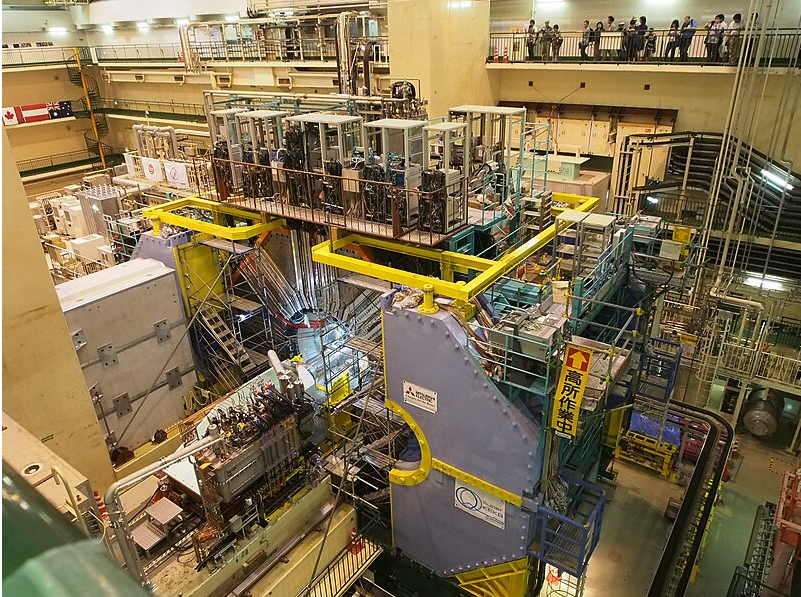The PPRC brings the UK into the Belle 2 experiment
Particle physicists from QMUL joined the 1200-strong Belle 2 experiment to work on searches for cracks in the Standard Model of particle physics and to develop a new kind of silicon detector for electron-positron colliders.

Belle II detector for SuperKEKB electron-positron particle accelerator under construction at KEK (The High Energy Accelerator Research Organisation) in Tsukuba, Japan. Photographed on Open House day.
The Belle 2 experiment at the KEK laboratory in Japan has been built to search for cracks in the standard model of Particle Physics. This is a unique facility that creates particles from the collisions of electrons and positrons at 10.58 GeV. This is just enough energy to create a particle called an Upsilon Four S (written as Υ(4S) for short) or pairs of tau leptons or light quarks. The particles created by this process allow scientists to search through a mind bogglingly wide range of possible phenomena to look for things that are not explained by our current understanding. It may seem that the whole field is obsessed by searching for something that probably won’t be there – but that is precisely because we know the Standard Model is wrong, and there must be something to find. We just don’t know that thing is.
1200 scientists from around the world work on this experiment, and QMUL scientists joining Belle 2 brought the UK into that experiment. This gives UK scientists access to a huge data set and wide range of science that can be explored to search for a crack in the Standard Model that may tell theorists how to make a better particle theory of nature.
We are no strangers to this environment, having previously worked on the BaBar experiment that was a competitor to Belle 2’s predecessor in the early 2000’s. There we contributed to the discovery of matter-antimatter asymmetry in B decays and tests of the theory that explained how quarks mix: this sounds complicated, but it is the part of the Standard Model that explains radioactive beta decay – something that is an everyday occurrence in our environment. We’re excited to be a part of this project and look forward to working with our new collaborators.
Prof. Adrian Bevan said “It is great that UK scientists will have the opportunity to search for new physics in this totally unique collider environment, and to work on the challenges of upgrading the Belle 2 silicon detector”
Read more: https://www.belle2.org
For more information please contact Prof. Adrian Bevan (a.j.bevan@qmul.ac.uk) or Dr Marcella Bona (m.bona@qmul.ac.uk).